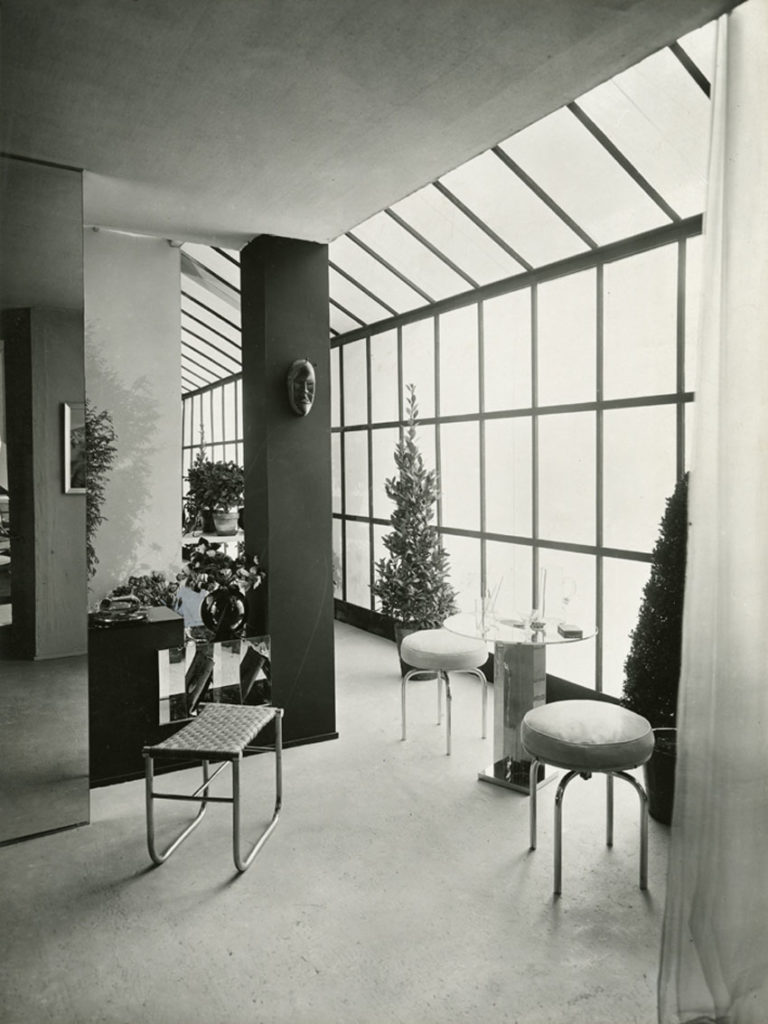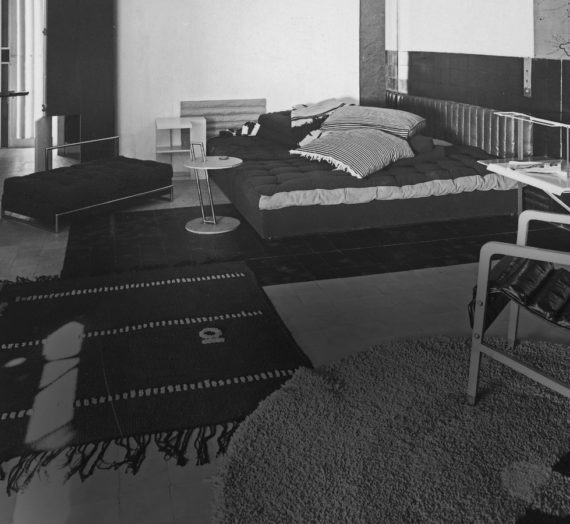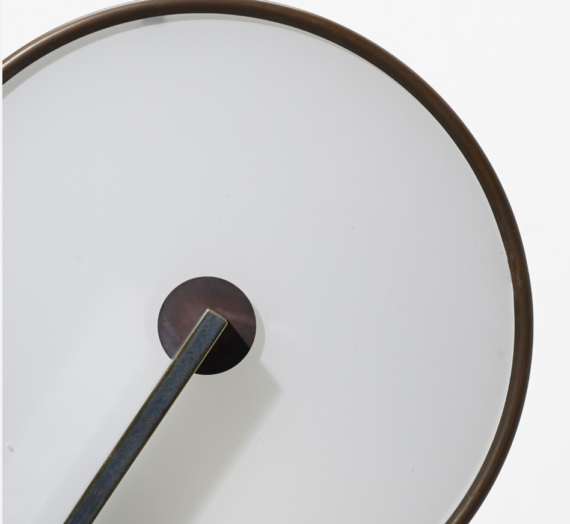The Mauritania bench animates fundamental substance of Charlotte Perriand’s aesthetic values and a truly modern sensitivity towards everyday life. In Perriand’s Autobiography, “Charlotte Perriand- A Life of Creation,”she states “I like being alone when I visit a country or historic site. I like being bathed in it’s atmosphere, feeling in direct contact with the place without the intrusion of a third party”. The bench with storage was designed specifically for for Cité Cansado and was produced by Steph Simon, Paris in 1958. A truly modernist shape and a balance in use of new materials manifest themselves to their full extent here.

Charlotte standing shirtless and triumphant overlooking the Swiss Alps, 1935 
Atelier de Saint-Sulpice, 1927
“There is one thing I never did, and that was flirt. That is, I didn’t ‘dabble’. I created and produced and my job was important. There was mutual respect, mutual recognition.”
–Charlotte Perriand
At the age of twenty-four Charlotte Perriand approached Le Corbusier and asked to join the designer’s famed studio. While studying at Paris’s École de l’Union Centrale des Arts Décoratifs, Perriand read two of Le Corbusier’s most notable works, Ver une architecture and L’Art decorative d’aujourd’hui prompting her to distance herself from the Art Deco aesthetic and seek out a style more relevant to the machine-age. Le Corbusier famously turned her away, stating “we don’t embroider cushions here.” Months later, after seeing her Bar sous le toi the Salon D’Automne exhibition in Paris, he apologized and hired her on. Perriand worked for him for ten years, collaborating with Le Corbusier and Pierre Jeanneret on numerous projects, most notably a set of tubular steel chairs that would become one of her most well-known designs. In the 1930s, concerned with social issues, Perriand worked to create functional and affordable designs. Moving away from the machine-age aesthetic of glass and metal, Perriand began experimenting with natural materials. She traveled to Japan as an official advisor on industrial design to the Ministry for Trade and Industry and became enamored with the simplistic beautify of Japanese design. Perriand studied local woodworking and immersed herself in the functional yet refined forms. Perriand revitalized her career upon returning to Europe in 1947, creating harmonious simplicity in her designs – what she called l’art d’habiter. She continued her collaboration with Le Corbusier on the Unité d’Habitation in Marseilles and worked with Fernand Leger and Jean Prouvé on various commissions. In 1985, her long career was celebrated with a retrospective at the Musée des Arts-Décoratifs in Paris and she remains one of the most influential designers of the 20th Century.






Leave a Reply